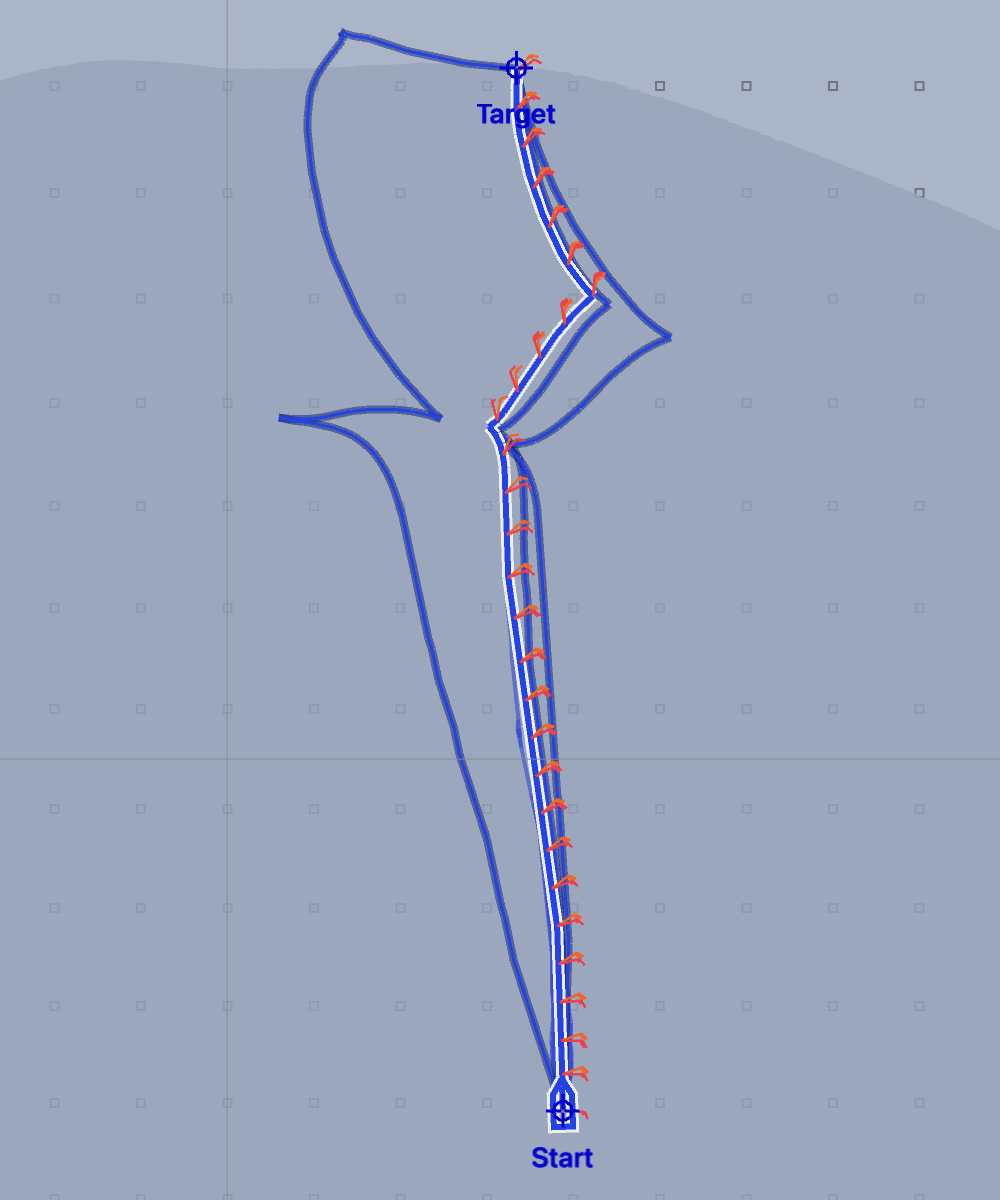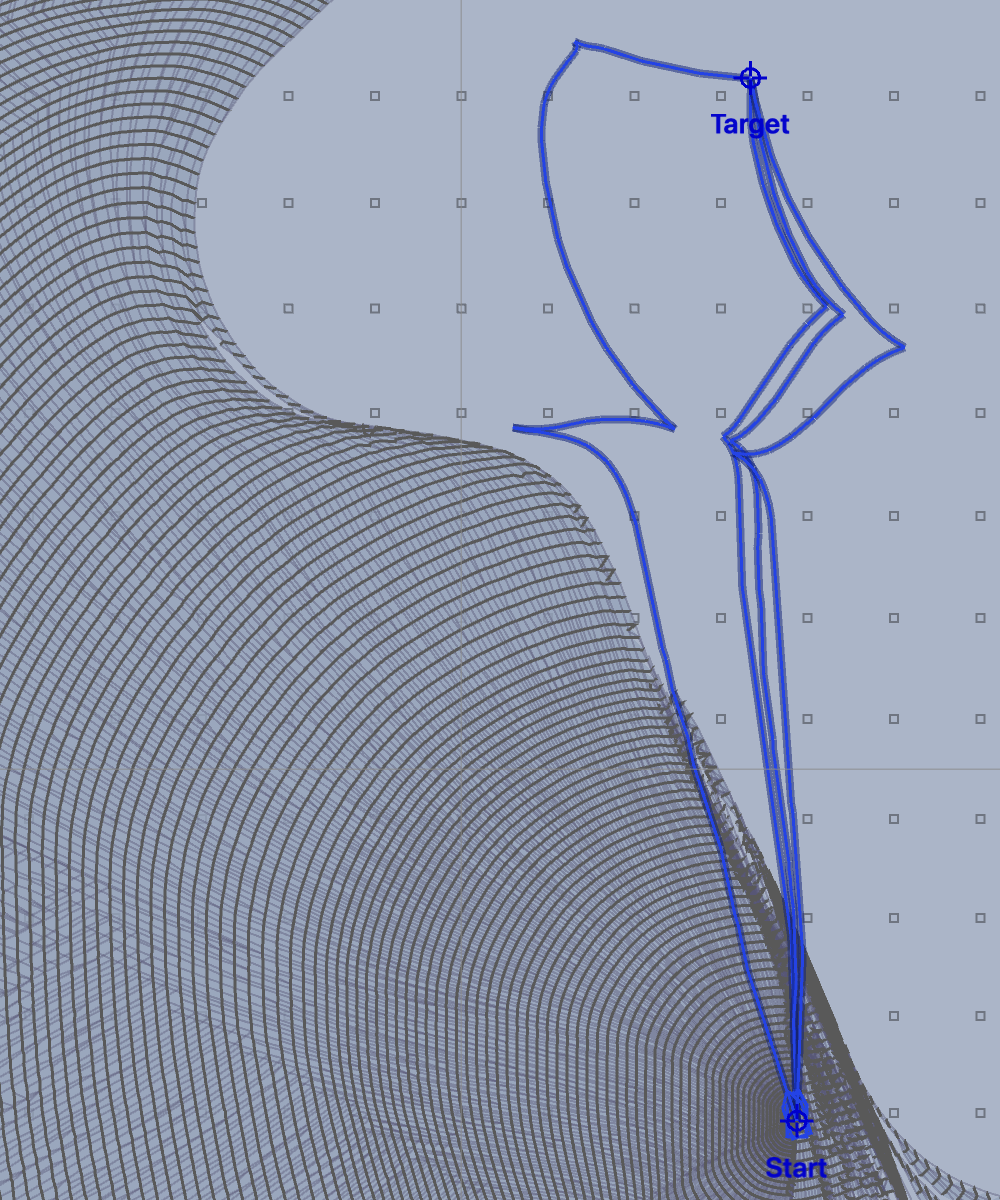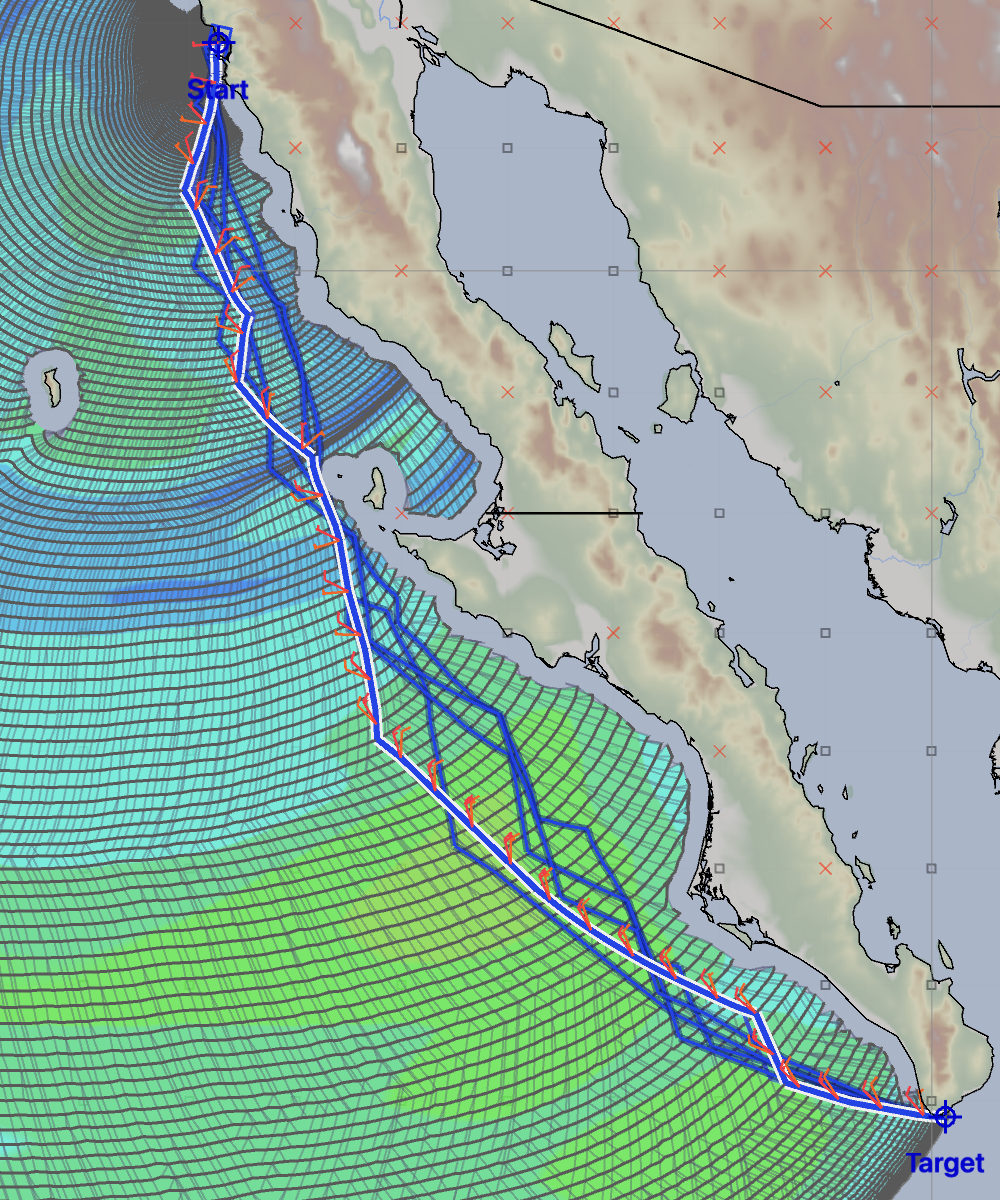The LuckGrib WR system allows the following sets of variations:
- try the route with and without motoring.
- try the route with and without allowing the vessel to heave to.
- try the route with all available wind fields (for probability winds, ensemble winds, wind gusts, etc.)
- generate variations where the minimum upwind sailing angle changes. Can you sail further off the wind and still arrive at a reasonable time?
- generate variations where the vessel is pushed hard or you back off and be more gentle. Sometimes you can slow down a little and have little effect on the route. At other times it’s definitely worth it to push hard toward your destination.
- generate departure time variations. Try multiple departures, spaced at a fixed time interval (a day, two days, 6 hours, etc.)
- try using more than one GRIB file, to see how well the various forecast models agree.
You can combine these variations - so you could ask to see all of the solutions over three departures, testing routes where you can both sail and motor, or only sail, generating six possible routes.
Example of the upwind angle variation.
This variation will help with the question: Can you sail further off the wind and still arrive at the destination at a reasonable time?
In this example, the solver was asked to create five variations, starting with the minimum upwind sailing angle set to 30° apparent. Four more variations were created, separated by 10°: 40°, 50°, 60° and 70°.


The highlit route is sailing a minimum of 30° apparent. However, the boat can fall off 20° and only lose 7 hours. At 60° the vessel takes an extra two days. At 70° the vessel is not able to arrive at all, as shown below:
 Minimum 70° apparent can not arrive.
Minimum 70° apparent can not arrive.When sailing no closer to the wind than 70° apparent, the boat is not able to sail toward the destination.
Example of the departure time variation.
The departure time variation will help with your understanding of both, when a good time to start a passage is, along with the possible variations in the passage shape and length.
Here is an example for a boat leaving Ensenada heading toward Cabo San Lucas. Five departures are generated, spaced a day apart:



(Note that the solver was told to stay 10nm away from land for these routes.)
The passage lengths range from 5 days 20 hours to 6 days 17 hours. All of the maximum wind speeds encountered look good. For a cruiser, any of these departures look good.
The solution named D1 is the first departure. Waiting a day results in what looks like pretty much the same trip. Waiting two days results in a slighly shorter trip - although the weather forecast uncertainty is rising and so that margin is suspect. If you wanted the fastest trip, it looks, from these results, that waiting 5 days may be best. Again, the forecast uncertainty is rising in these later departures.
As none of these departures look worrying and they are all within a fairly close margin, if I was ready to leave, I would pick the earliest departure and start heading toward warmer water!